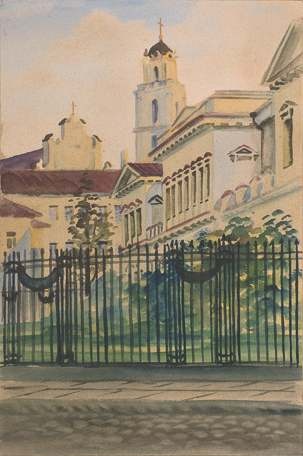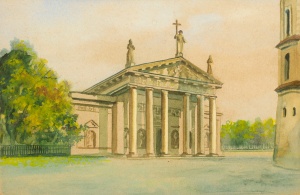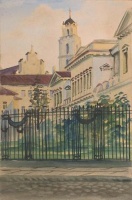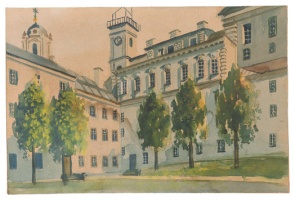


The palace
| Author: |
Izabela Borowska (1912–after 2006)  |
| Created: | 1940s-1950s |
| Material: | paper |
| Technique: | watercolour |
| Dimensions: | 26 × 17 cm |
| Signature: | unsigned |
Izabela Borowska (1912–after 2006) lived in Vilnius between the wars, and moved to Poland along with many other Poles after the Second World War. She could not forget Vilnius, and painted its architecture. Since she was unable to see the city in reality, she relied on photographs. One of her documentary watercolours shows the building that had been the governor general’s palace, with the square surrounded by an elaborate fence. Between the wars, when Vilnius was annexed by Poland, the square was named Napoleon Square. Its official status as the Palace of the Government was conferred on the mansion in 1919, and Polish statesmen, such as Marshal Józef Piłsudski, General Lucjan Żeligowski, President Stanisław Wojciechowski and others, stayed there when they visited Vilnius. The palace was also used for art exhibitions during the interwar period. Thus, for Borowska, the Classical mansion was associated with visiting Polish statesmen, military commanders, other dignitaries who stayed there, and with official receptions in the city. In the Soviet years, it served as the Army Officers’ Palace, and later as the Artists’ Palace. After Lithuania regained its independence, it became the President’s Office.
Source: Law firm Valiunas Ellex art album VILNIUS. TOPOPHILIA I (2014). Compiler and author Laima Laučkaitė








